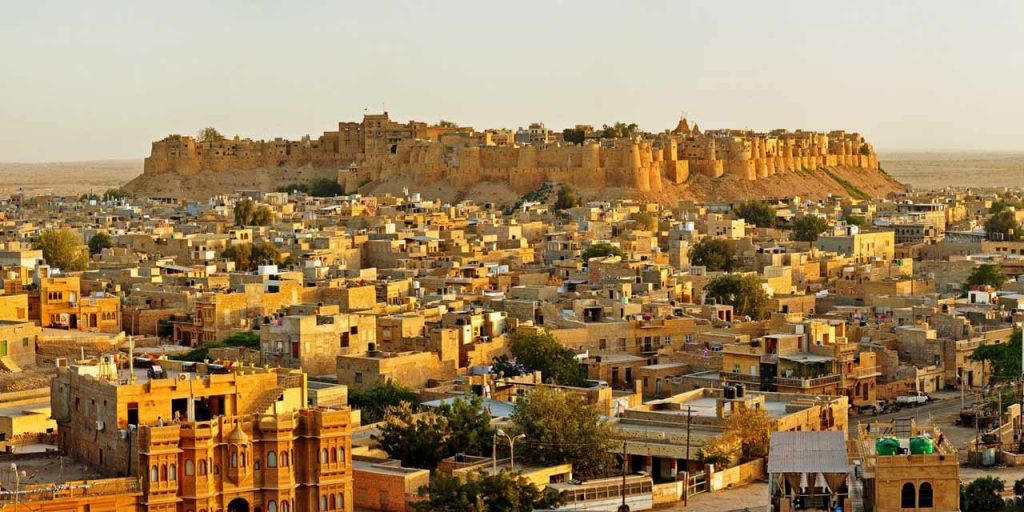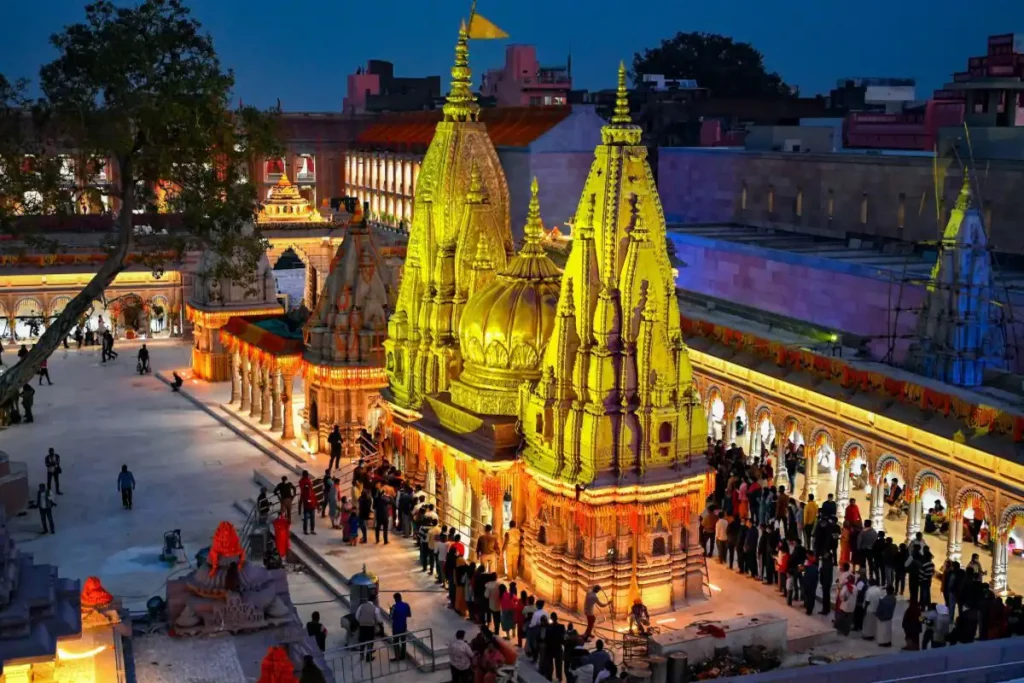India is a vibrant land of startling contrasts where both the traditional and modern worlds meet. The world’s seventh largest nation by area and the second largest in terms of population, India boasts a rich heritage that’s the result of centuries of different cultures and religions leaving their mark. We can travel many Tourist Attractions in India
To help you make the most of your time in this amazing country, refer often to our list of the top tourist attractions in India.
The Taj Mahal, Agra
Perhaps India’s most recognizable building, the Taj Mahal is also the world’s most famous testimony to the power of love. Named after Mumtaz Mahal, the favorite wife of Emperor Shah Jahan, this most beautiful of mausoleums was begun upon her death in 1631 and took 20,000 workmen until 1648 to complete. This is the best tourist attractions in India.
The best time to visit is either at dawn or dusk when the atmosphere is brilliantly altered by the change in lighting. If possible, try to catch a view of the Taj Mahal’s reflection from the far bank of the Yamuna River-it makes for a memorable (and safe) selfie.
Address: 64 Taj Road, Agra-282001

2. The Holy City of Varanasi
Dating back to the 8th century BC, Varanasi is one of the oldest still inhabited cities in the world. A major pilgrimage center for Hindus, this holy city has long been associated with the mighty Ganges River, one of the faith’s most important religious symbols. This is also the best tourist attractions in India
Varanasi offers many reasons to visit, not least of them the chance to explore the Old Quarter adjacent to the Ganges where you’ll find the Kashi Vishwanath Temple, built in 1780. The New Vishwanath Temple with its seven separate temples is also of interest.
Bathing in the Ganges is of great importance to Hindus, and numerous locations known as “ghats” feature stairways leading to the water where the faithful bathe before prayers. The largest are Dasashvamedh Ghat and Assi Ghat. The latter, at the confluence of the Ganges and Asi rivers, is considered particularly holy.
Also worth seeing is Banaras Hindu University, established in 1917 and noted for its massive library with more than a million books, and the superb Bharat Kala Bhavan museum featuring fine collections of miniature paintings, sculptures, palm-leaf manuscripts, and local history exhibits.
Bathing in the Ganges is of great importance to Hindus, and numerous locations known as “ghats” feature stairways leading to the water where the faithful bathe before prayers. The largest are Dasashvamedh Ghat and Assi Ghat. The latter, at the confluence of the Ganges and Asi rivers, is considered particularly holy.
Also worth seeing is Banaras Hindu University, established in 1917 and noted for its massive library with more than a million books, and the superb Bharat Kala Bhavan museum featuring fine collections of miniature paintings, sculptures, palm-leaf manuscripts, and local history exhibits.
3. Harmandir Sahib: The Golden Temple of Amritsar
Founded in 1577 by Ram Das, Amritsar is an important hub of Sikh history and culture. The main attraction here is Harmandir Sahib, opened in 1604 and still often referred to as the Golden Temple for its beautiful gold decoration.
The holiest of India’s many Sikh shrines (it also attracts many Hindus and people of other faiths), the temple was built in a blend of Hindu and Islamic styles. Its lower marble section features such flourishes as ornate inlaid floral and animal motifs, while the large golden dome represents a lotus flower, a symbol of purity to Sikhs.
Address: Golden Temple Road, Amritsar, Punjab 143006

4. The Golden City: Jaisalmer
So named for the yellow sandstone used in most of its buildings, the Golden City of Jaisalmer is an oasis of splendid old architecture that rises from the sand dunes of the Thar Desert. Once a strategic outpost, today the city is filled with splendid old mansions; magnificent gateways; and the massive Jaisalmer Fort, also known as the Golden Fort, a daunting 12th-century structure that rises high above the town. This is the best tourist attractions in India, specially for foreigners.
In addition to its palaces, temples, and fine old homes, the fortress boasts 99 bastions along with massive gates leading to its main courtyard where you’ll find the seven-story-tall Maharaja’s Palace. Started in the early 1500s and added to by successive rulers right up until the 19th century, the palace offers sections open to the public, including areas beautifully decorated with tiles from Italy and China, and intricately carved stone doors

5. The Red Fort, New Delhi
Built by Shah Jahan in 1648 as the seat of Mughal power – a role it maintained until 1857 – the magnificent crescent-shaped Red Fort in New Delhi, named after the stunning red sandstone used in its construction, covers a vast area of more than two square kilometers, all of it surrounded by a large moat.
Highlights include its two largest gates: the impressive Lahore Gate (the fort’s main entrance) and the elaborately decorated Delhi Gate, once used by the emperor for ceremonial processions.
Address: Netaji Subhash Marg, Chandni Chowk, New Delhi, Delhi 110006

6. Mumbai: The Gateway of India
Standing an impressive 26 meters tall and overlooking the Arabian Sea, the iconic Gateway of India is a must-see when in Mumbai. Built to commemorate the arrival of King George V and his wife Queen Mary in 1911, this stunning piece of architecture was opened with much pomp and ceremony in 1924 and was, for a while, the tallest structure in the city.
Constructed entirely of yellow basalt and concrete and notable for its Indo-Saracenic design, the Gateway of India was also the scene of a rather less jubilant procession of British soldiers in 1948 when India gained its independence. These days, the huge archway provides a stunning backdrop that is as popular among locals as it is tourists.

7. Mecca Masjid, Hyderabad
Construction of Hyderabad’s Mecca Masjid, one of the world’s largest mosques – and one of the oldest in India – began in 1614 during Mohammed Quli Qutub Shah’s reign and took almost 80 years to complete.
Large enough to accommodate 10,000 worshipers, this beautiful mosque’s 15 enormous arches and pillars were each wrought from single slabs of black granite dragged to the site by huge cattle trains reputedly consisting of up to 1,400 bulls.
Taking its name from the bricks above the central gate that were brought here from Mecca, this impressive complex features highlights such as its main gateway, a huge plaza, and a large manmade pond. There’s also a room that houses the hair of Prophet Mohammed.

8. Amer Fort, Jaipur
Amer Fort (often also spelt “Amber”) was built as a fortified palace in 1592 by Maharaja Man Singh I and has long served as the capital of Jaipur. Carved high up into the hillside, the fort is accessible on foot via a steep climb or by shuttle rides from the town below (better still, let an elephant do the work).
Highlights include Jaleb Chowk, the first courtyard, with its many decorated elephants, and the Shila Devi Temple, dedicated to the goddess of war. Also of note is the adjoining Hall of Public Audience (Diwan-i-Am) with its finely decorated walls and terraces frequented by monkeys.
Other highlights include Sukh Niwas (the Hall of Pleasure) with its many flowerbeds and a channel once used to carry cooling water, and the Temple of Victory (Jai Mandir), notable for its many decorative panels, colorful ceilings, and excellent views over the palace and the lake below.

9. The Beaches of Goa
Long known within India as the “go-to” destination for those seeking a great beach holiday, Goa’s beautiful western coastline, overlooking the Arabian Sea, has only recently been discovered by tourists from overseas. Goa’s more than 60 miles of coastline is home to some of the world’s loveliest beaches, each with their own particular appeal.
For those looking for peace and quiet, isolated Agonda Beach is a good choice, while Calangute Beach is by far the most commercial and crowded. For those in search of posh resorts, yoga getaways, and spa vacations, the beaches of Mandrem, Morjim, and Ashwem are fashionable among wealthy Indians and Westerners alike. Palolem is another one of Goa’s popular beaches in a beautiful setting.
Also worth a visit is Divar Island, accessed by ferry from Old Goa. Highlights include Piedade, a typical Goan village and home to the Church of Our Lady of Compassion with its interesting stucco work, Baroque plaster decorations, and altars, as well as stunning views of the surrounding countryside.

10. Periyar National Park and Wildlife Sanctuary, Madurai
One of South India’s most popular tourist attractions, Periyar National Park and Wildlife Sanctuary is centered around a lake built by British engineers in 1895 for irrigation and to provide water to the city of Madurai.
Established in 1934, this beautiful park is home to numerous species of mammals, including a large free-roaming Indian elephant population, wild boar, otters, the lion-tailed macaque, and more than 20 Bengal tigers. Bird-watching is a popular activity with frequent sightings of species such as darters, storks, kingfishers, hornbills, and racket-tailed drongos, along with many interesting varieties of butterflies.

The best ways to enjoy the park’s splendid mountain scenery are to take a lake cruise or guided jungle walk, the latter allowing visitors a chance to come face to face with elephant herds and observe other wildlife from watchtowers and viewing platforms.



